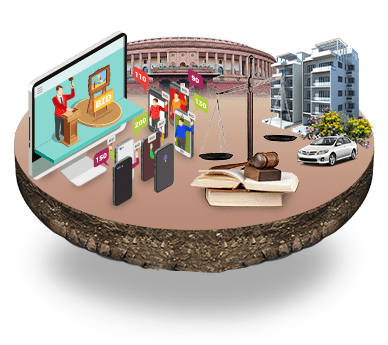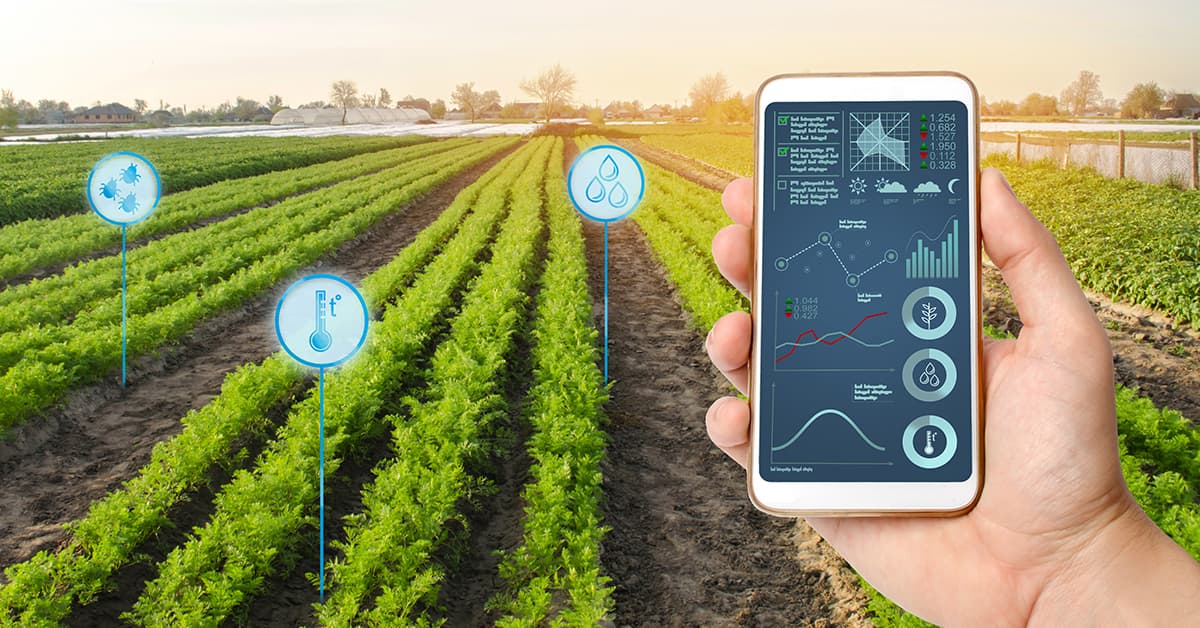Did you hear what Bill Gates recently spoke on the impact of digital technologies on farmers? If you missed it, you missed the wood with the trees. The Microsoft boss was amazed at how the digital approach was connecting with farmers in Odisha, an eastern Indian state where the tech icon has big stakes in philanthropy. With digital interventions, Odisha has categorized the farmers across locations and could track what crops they are raising. Mr Gates observed that the digital ecosystem helped the farmers too. They could know beforehand about the outbreak of a crop disease and get alerts on inclement weather or changing market prices. This is the picture of a dynamic digital revolution at work – not just doable but scalable too.
India has frontloaded digital tech but imbalances stalk farmers
.jpg)
The transformation of agriculture through digital technologies presents a fascinating paradox. While we live in an age where a single farm can generate over 190,000 data points daily - expected to surge to 4.1 million by 2050 - many farmers still struggle with basic challenges like access to credit and market information. India's ambitious Digital Agriculture Mission, launched with a Rs 2,817 crore outlay, exemplifies both the enormous potential and significant challenges in creating a connected agricultural ecosystem.
Think of digital agriculture as a three-legged stool: technology infrastructure, market linkages, and human capacity. Like any stool, it's only as stable as its weakest leg. The current landscape reveals an imbalance - while we have made remarkable strides in technological innovation, market inefficiencies and human adoption barriers continue to wobble the stool.
The AgriStack initiative in India, which introduces a farmer ID system similar to Aadhaar, represents a crucial first step in building this ecosystem. It's akin to creating a digital passport for farmers, enabling them to navigate the complex landscape of agricultural services seamlessly. However, the reality check is sobering: despite $1.7 billion in AgriTech investments in India during 2014-2019, half of Indian farmers still lack basic farming equipment, and three-quarters face high risk from pests and weather damage.
.jpg)
Some challenges that demand attention……
First, the "scale paradox" - while digital solutions show impressive potential, few achieve meaningful scale. In sub-Saharan Africa, only 15 digital agriculture solutions have crossed the million-user mark, with active usage often hovering between 15 and 30 per cent. This mirrors the early days of digital banking - before M-PESA became ubiquitous in Kenya, numerous digital payment solutions struggled to gain traction.
Second, the "innovation-impact gap" - despite myriad startups and initiatives, meaningful impact on farmer incomes remains limited. This suggests that innovation alone isn't enough; we need robust business models and adequate growth-stage capital.
Third, the "market efficiency paradox" - while digital solutions focus heavily on productivity improvement, market linkage solutions that could deliver significantly higher value remain underutilized.
Looking ahead, transforming agriculture requires a coordinated ecosystem approach. Government initiatives like India's Digital Agriculture Mission must synchronize with private sector innovation and development partner support. The journey resembles a relay race where different stakeholders must pass the baton seamlessly - governments establishing enabling infrastructure, private players driving innovation and scale, and development organizations bridging critical gaps.
Krushak Odisha- the digital backbone of transformation
.jpg)
What struck Bill Gates is the scalability of Odisha’s digital innovation in agriculture. At the heart of this innovation is Krushak Odisha, a seamless data repository designed by CSM Tech. This robust platform functions as the single source of truth for all farmer-related data, covering demographics, assets, and more. Unlike other farmer databases that often focus on families, Krushak Odisha zeroes in on individual farmers, providing a more precise and personalized approach. The database is Aadhaar-seeded, linking to the authenticated bank details of each farmer for greater accuracy.
What makes Krushak Odisha truly remarkable is its seamless integration with multiple external systems, such as the Paddy Procurement Automation System (PPAS), Millet Procurement Automation System (MPAS), Aadhaar, Bhulekh (Odisha's land records), seed and fertilizer management, soil health cards, and the Pradhan Mantri Fasal Bima Yojana (PMFBY). This interconnectedness ensures a holistic view of each farmer's profile.
Before the launch of Krushak Odisha, farmers faced numerous hurdles in verifying their eligibility for government schemes, often having to repeatedly validate their identity and qualifications. This not only delayed access to benefits but also complicated the process for officials trying to identify genuine beneficiaries amid fragmented data. Ground-level data entry issues further slowed the delivery of support.
Now, Krushak Odisha has transformed the landscape by identifying 6.6 million unique farmers out of approximately 8.1 million Aadhaar-linked profiles, with 4.9 million already verified. The platform encompasses all types of farmers—cultivators, sharecroppers, landless laborers, livestock and fishery farmers, and forestry workers—capturing comprehensive data that undergoes a rigorous three-tier verification process to ensure accuracy and integrity. This initiative has paved the way for more efficient and targeted support for Odisha's agricultural community.
Farming opportunities ahead
Critics might argue that digitalization could exacerbate existing inequalities or create new dependencies. These are valid concerns. However, the alternative - leaving smallholder farmers vulnerable to climate change, market volatilities, and information asymmetries - poses greater risks.
The path forward requires balancing ambition with pragmatism. Success lies not in pursuing "digital for digital's sake" but in creating practical, scalable solutions that address real farmer needs. As the agricultural sector generates ever-increasing amounts of data, the challenge shifts from data generation to meaningful integration and application.
The digital transformation of agriculture isn't just about technology - it's about creating an ecosystem where farmers can access, understand, and leverage digital tools to improve their livelihoods. The journey has begun, but realizing its full potential requires sustained commitment, coordination, and critical evaluation of what works and what doesn't.










































We will verify and publish your comment soon.